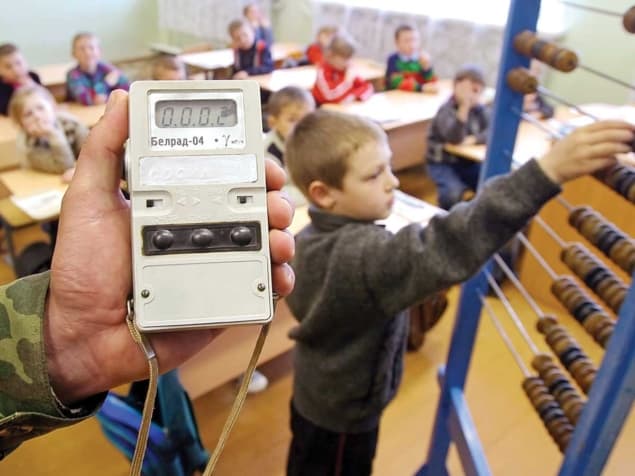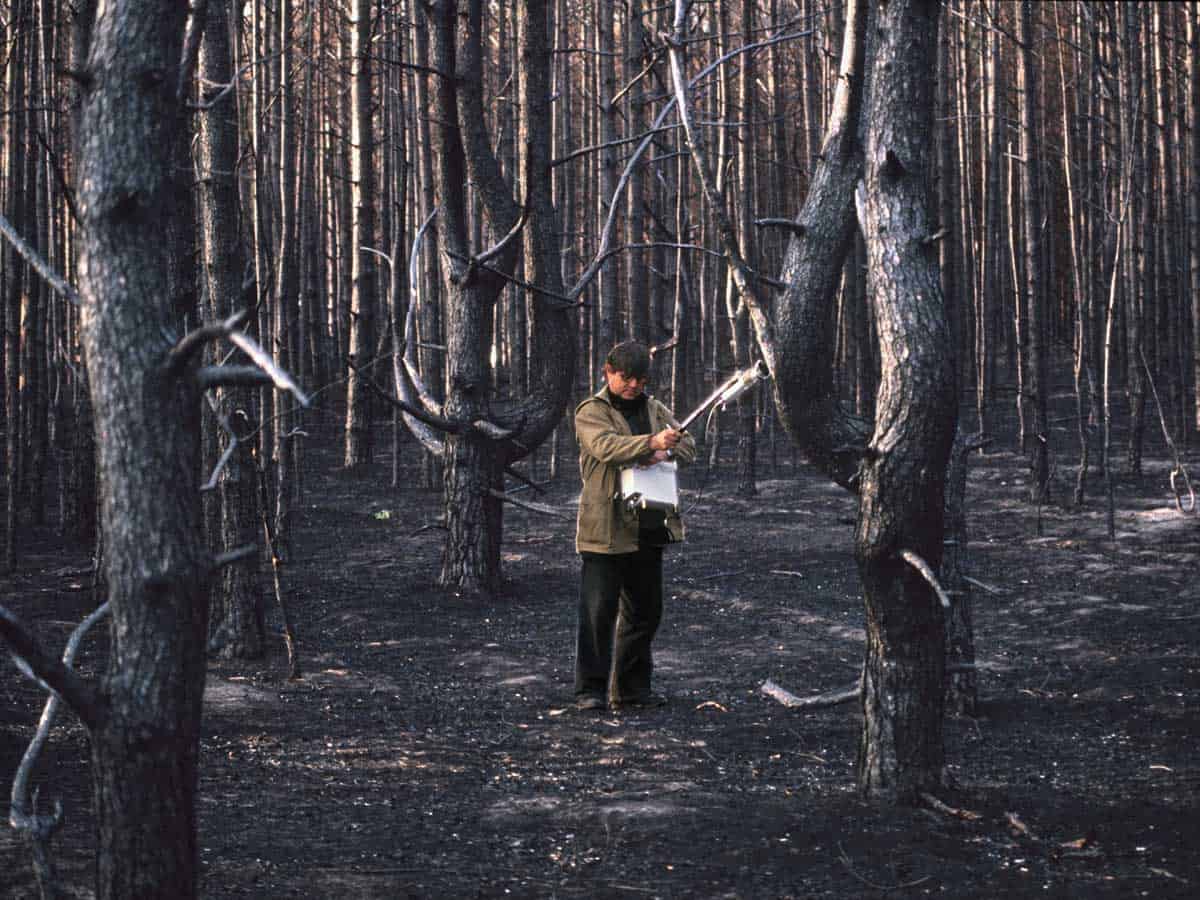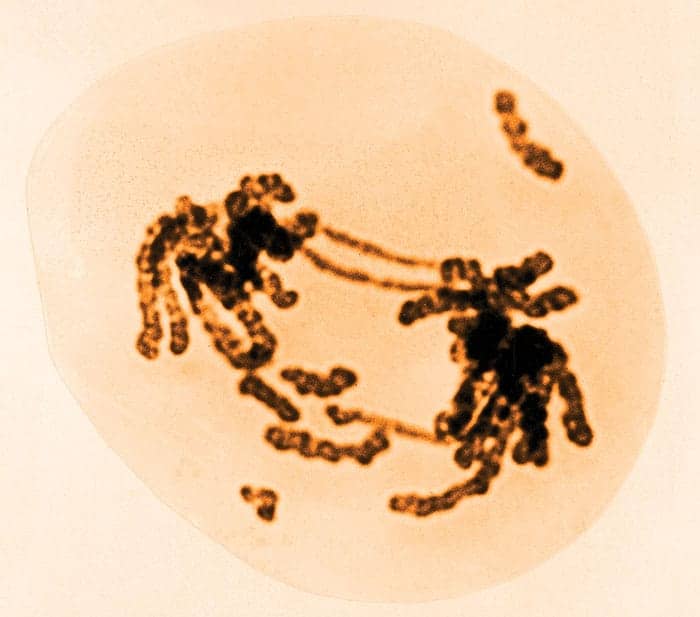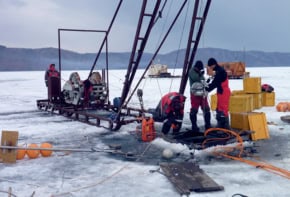Historian Kate Brown argues that scientists should re-examine Soviet-era evidence of health effects from low doses of radiation

In June 1980 a doctor with the Oak Ridge Associated Universities in the US wrote a letter to a colleague at the Knolls Atomic Power Laboratory in upstate New York. The pair were corresponding about a forthcoming study of employee health at the Knolls reactor, and the doctor, C C Lushbaugh, wrote that he expected “little ‘useful’ knowledge” from this study “because radiation doses have been so low”. Even so, he agreed that the study had to be done because “both the workers and their management need to be assured that a career involving exposures to low levels of nuclear radiation is not hazardous to one’s health”. The results of such a study, he surmised, would help to counter anti-nuclear propaganda and resolve workers’ claims. However, they could also be a liability. If a competing union or regulatory agency got hold of the employees’ health data, Lushbaugh fretted, it could be weaponized. “I believe,” he continued, “that a study designed to show the transgressions of management will usually succeed.”
Lushbaugh’s dilemma is characteristic of research on the human health effects of exposure to low doses of radiation. He assumed he knew the results – good or bad – before the study began, because those results depended on how the study was designed. The field was so politicized, in other words, that scientists were using health studies as polemical tools and, consequently, asking few open-ended scientific questions.
A few years after Lushbaugh posted this letter, reactor number four at the Chernobyl nuclear power plant blew up, killing 31 workers and firefighters and spreading radioactive material across a broad area of what was then the Soviet Union (now Ukraine and Belarus) and beyond. The accident also exploded the field of radiation medicine and, for a while, promised to rejuvenate it. In August 1986, months after the accident, the chief of the United Nations Scientific Committee on the Effects of Atomic Radiation (UNSCEAR), Giovanni Silini, advocated an enduring epidemiological investigation similar to research on atomic-bomb survivors in Japan [1]. Many other scientists concurred, hoping that Chernobyl could clear up ongoing controversies and uncertainties surrounding low-dose exposures.

It never happened. No long-term epidemiological study took place. That’s not to say there isn’t any information. A few summers ago I went to the Ukrainian national archives in the dusty, bustling outskirts of Kiev and asked the archivists for files on Chernobyl from Soviet Ukraine’s Ministry of Health. They laughed, telling me Chernobyl was a banned topic in the Soviet Union. “You won’t find anything,” they said.
They were wrong. I found dozens of collections labelled “The medical effects of the Chernobyl disaster”. I started reading and have not yet been able to stop.
The aftermath
In the years between 1986 and 1991, doctors and sanitation officials wrote to the Ministry of Health in Kiev with alarming accounts of widespread, chronic illness among the hundreds of thousands of children and adults living in contaminated territories. They recorded increases in tonsillitis, upper respiratory disease and disorders of the digestive tract and immune system. Between 1985 and 1988, cases of anaemia doubled. Physicians from almost every region in the zone of contamination reported a leap in the number of reproductive problems, including miscarriages, stillbirths and birth malformations. Nervous-system disorders surged. So did diseases of the circulatory system. In 1988, in the heavily contaminated Polesie region of northern Ukraine, 80% of children examined had upper respiratory diseases and 28% had endocrine problems. In Ivankiv, where many cleanup workers lived, 92% of all children examined had a chronic illness.
I also went to Minsk to check the archives in Belarus. There, I read reports that sounded eerily similar to the Ukrainian documents. These reports were classified “for office use only”, meaning that at the time, scientists were not free to exchange this information across districts or republics of the Soviet Union. Even so, independently, they were reporting similar, bad news. The problem grew so dire in Belarus that in 1990 officials declared the entire republic, which received more than 60% of Chernobyl fallout, a “zone of national ecological disaster”.
The Ukrainian and Belarusian reports, hundreds of them, read like a dirge from a post-catastrophic world. Doctors wrote from clinics in Kharkiv, far outside the contaminated zone, and described similar health problems among evacuees who had settled there. Physicians sent telegrams from Donetsk, where they were treating a complex of illnesses among young miners who had burrowed under the smouldering reactor in the days after the accident. Medical workers sent in to examine people in contaminated regions also fell ill.
In response, the Union of Soviet Radiologists penned a petition to alert Soviet leaders of the ongoing public health disaster. The president of the Belarusian Academy of Science sent a detailed summary of scientists’ findings to Minsk and Moscow. Even a KGB general, Mikhailo Zakharash, sounded the alarm. Zakharash, who was also a medical doctor, conducted a study of 2000 cleanup workers and their family members in a specially equipped KGB clinic in Kiev. In 1990, summing up four years of medical investigation, he wrote, “We have shown that long term, internal exposures of low doses of radiation to a practically healthy individual leads to a decline of his immune system and to a whole series of pathological illnesses.”
Chronic radiation
These findings track with what Soviet doctors had long described as chronic radiation syndrome, a complex of symptoms derived from chronic exposure to low doses of radiation. Researchers working on Chernobyl discerned a pattern of disease that tracked with pathways of radioactive isotopes entering the body, paths that began in either the mouth and headed towards the gastrointestinal tract or started in the lungs and followed blood into circulatory systems. Radioactive iodine sped to thyroids, they hypothesized, causing endocrinal and hormonal damage.
Critics, mostly in Moscow and the ministries of health, acknowledged the growth in health problems, but denied a connection to Chernobyl. A E Romanenko, the Ukrainian Minister of Health, is credited with inventing the word “radiophobia” to describe a public fear of radiation that induced stress-related illness. He and his colleagues also pointed to a screening effect from mass medical monitoring. Local doctors, they said, were projecting the diagnoses of chronic radiation syndrome onto their patients, blaming it for any illness found after Chernobyl.
There are some problems with these arguments. From 1986 to 1989, Chernobyl was a censored topic in the Soviet Union. Doctors could not exchange information about health problems, nor did they have access to maps of radioactive contamination. They only learned to be “radiophobic” by judging the bodies they examined. In the same years, doctors were also fleeing contaminated areas en masse, leaving hospitals and clinics in those regions staffed at 60%. As physicians left, so too did the chance for diagnosis, meaning that under-reporting of illnesses was more likely than a screening effect. Moreover, doctors from the northern regions of the Rivne province, which were at first judged clean and only in late 1989 designated contaminated, reported the same growth of illness as areas originally deemed “control zones,” regions with counts of more than 5 curies per square kilometre. The president of the Belarusian Academy of Science, V P Platonov, pointed to a vacuum of knowledge: “Until this time, no population has ever lived with continual internal and external exposures of this size.” Risk assessments assuring safe levels in the contaminated zones were extrapolated from the Japanese Atomic Bomb Survivor Lifespan Study, but these began only in 1950, five years after exposure. “Much is uncertain,” Platonov continued, “about fundamental aspects of the effects of low doses of radiation on human organs,” [2].
What happened to the 1980s Chernobyl health studies, which might have led to a renaissance in the field of radioecology? Essentially, they were overlooked. To figure out why, I went to the headquarters of the World Health Organization (WHO) in Geneva, to the UN’s archives in New York and the archives of UNSCEAR in Vienna. There, I found evidence of a conflict between branches of the WHO and the International Atomic Energy Agency (IAEA) over which organization would control the studies of Chernobyl health effects.

The risks and rewards of radiation
By 1989 angry crowds were questioning the Soviet Union’s handling of Chernobyl, and Soviet leaders asked foreign experts for help in assessing the disaster’s health impacts. The IAEA agreed, and Fred Mettler, a radiologist and American delegate to UNSCEAR, was appointed to head the medical section of an IAEA team. In 1990, as he and his team examined 1726 people in six contaminated zones and six control zones, Soviet doctors gave him 20 slides from children diagnosed with thyroid cancer. Thyroid cancer is very rare in children: before the Chernobyl accident, doctors saw eight or nine cases per year in all of Ukraine. Twenty cases in just three provinces was hard to believe. Dubious, Mettler brought the slides to the US to have them verified. They indeed indicated thyroid cancer.
Cancer cluster
Mettler mentioned this major medical finding in the 1991 International Chernobyl Project (ICP) technical report, but strangely, he also stated that there was “no clear pathologically documented evidence of an increase in thyroid cancer” [3]. The report concluded that there were no detectable Chernobyl health effects and only a probable chance of childhood thyroid cancers in the future. In a 1992 publication on thyroid nodules in the Chernobyl territories, Mettler failed to mention the 20 verified cases at all [4].

How could such a lapse occur? I found a confidential 1990 UN memo that seems relevant, particularly in light of the study-design problem set out in Lushbaugh’s letter a decade earlier. The memo suggests that the IAEA was conducting the ICP study to “allay the fears of the public” in service of “its own institutional interest for the promotion of peaceful uses of nuclear energy” [5]. The experiences of Keith Baverstock, then head of the radiation protection programme in the WHO’s European office, likewise reveal an institutional aversion to bad news. In July 1992 Baverstock planned to go to Minsk to examine childhood thyroid cases in Belarus, where doctors reported an astounding 102 new cases. At the last minute, officials from the WHO and the Commission of European Communities inexplicably pulled out of the mission. In an interview with me, Baverstock, an expert on the effects of ionizing radiation, said that a WHO official told him he could get fired if he went to Minsk.
He went anyway. With Belarusian scientists, he published news of the thyroid cancer epidemic in Nature. A top IAEA official complained angrily to the WHO, and the two agencies put pressure on Baverstock to retract his article. He refused, and a barrage of letters followed in Nature disputing the connection between the cancers and Chernobyl exposures [6]. Leading scientists from the US Department of Energy, the National Cancer Institute, Japan’s Radiation Effects Research Foundation and the IAEA argued that cancers were found because of increased surveillance. They called for a suspension of judgment and for further study. Repetitive and dismissive, their letters read like an orchestrated pile-on.
We now know that these global leaders in radiology were wrong. The numbers of cases rose into the thousands, too high to dismiss, and in 1996 the WHO and the IAEA finally admitted that skyrocketing rates of childhood thyroid cancer were most likely due to Chernobyl exposures. Today, the UNSCEAR maintains that the health consequences of the Chernobyl accident are limited to 31 direct fatalities – plus 6000 cases of children’s thyroid cancer [7].
Lingering questions
The question is – so what? Despite the 1991 ICP report’s erroneous claim of no health effects, UN agencies eventually recognized the cancer epidemic. What difference did a few years make? A great deal, it turns out. The ICP report also recommended that resettlements from the most contaminated regions should cease [8]. Consequently, the planned resettlement of 200,000 people living in areas contaminated with high levels of radiation (between 15 and 40 curies per square kilometre) slowed tremendously. The UN General Assembly had also been waiting for the report before raising funds for Chernobyl relief. The $646m budget (equivalent to about $1.1bn today) included medical aid, resettlement funds and a large-scale epidemiological study of Chernobyl health effects. The assertion by important UN agencies that there were no detectable health effects deflated that effort. Before the report, Japan had given $20m to the WHO, but afterwards it gave no more and complained about the funds being wasted. A few other countries gave sums totalling less than $1m, while the US and the European Community begged off entirely, citing the ICP report as a “factor in their reluctance to pledge” [9].
In subsequent years, IAEA and UNSCEAR officials cited the ICP report when discouraging Chernobyl-related health projects. In 1993 UNSCEAR scientific secretary Burton Bennett recommended that UN agencies suspend all programmes aimed at Chernobyl relief because they were unnecessary. He and IAEA administrator Abel Gonzalez, who led the ICP assessment, widely shared their views among UN agencies about “misinformation surrounding the Chernobyl accident” [10]. When the WHO, nonetheless, started a pilot study on Chernobyl health effects, Gonzalez wrote that he could not imagine what the WHO “expects to be able to detect for the level of doses in question”. Irked that WHO officials would examine any effects but psychological ones, he charged, “The World Health Organization seems to ignore, expressly or tacitly, the conclusions and recommendations of the International Chernobyl Project,” [11].
The consequences of this moment of deviant science continue 30 years later. Today we know little about the non-cancerous effects that Soviet scientists working in contaminated zones reported in the late 1980s, and which they attributed to internal and external exposures to ionizing radiation. Are these effects as real as the childhood thyroid cancers proved to be? The Soviet post-Chernobyl medical records suggest that it is time to ask a new set of questions about long-term, low-dose exposures.
References
- Giovanni Silini 1986 “Concerning proposed draft for long-term Chernobyl studies” Correspondence Files, UNSCEAR Archive
- V P Platonov and E F Konoplia 1989 “Informatsiia ob osnovynkh rezul’tatakh nauchnykh rabot, sviazannykh s likvidatsiei posledstvii avarii na ChAES” RGAE 4372/67/9743: 490
- International Chernobyl Project, Proceedings of an International Conference (Vienna: IAEA 1991): 47. Mettler also admitted that the slides checked out at the Vienna conference convened to discuss the report. For a discussion of thyroid cancer, see The International Chernobyl Project, Technical Report, Assessment of Radiological Consequences and Evaluation of Protective Measures (Vienna: IAEA 1991): 388
- Fred Mettler et al. 1992 “Thyroid nodules in population around Chernobyl” Journal of American Medical Association 268 616
- From Enrique ter Horst, Asst Sec Gen, ODG/DIEC to Virendra Daya, Chef de Cabinet, EOSG, 16 April 1990, United Nations Archive, New York S-1046 box 14, file 4, acc. 2001/0001
- Baverstock et al. 1992 “Thyroid cancer after Chernobyl” Nature 359 21; Kazakov et al. 1992 “Thyroid cancer after Chernobyl” Nature 359 21; I Shigematsu and J W Thiessen 1992 “Childhood thyroid cancer in Belarus” Nature 359 680; V Beral and G Reeves 1992 “Childhood thyroid cancer in Belarus” Nature 359 680; E Ron, J Lubin, A B Scheider 1992 “Thyroid cancer incidence” Nature 360 113
- “The Chernobyl accident: UNSCEAR’s assessments of the radiation effects” UNSCEAR website
- The International Chernobyl Project: an Overview (Vienna: IAEA 1991): 44
- “International co-operation in the elimination of the consequences of the Chernobyl Nuclear Power Plant accident” 24 May 1990, UNA S-1046/14/4; “Third meeting of the Inter-Agency Task Force on Chernobyl” 19–23 September 1991, WHO E16-445-11, 5; “Briefing note on the activities relating to Chernobyl” 3 June 1993, Department of Humanitarian Affairs DHA, UNA s-1082/35/6/, acc 2002/0207; Anstee to Napalkov, 17 Jan 1992, WHO E16-445-11, 7
- Gonzalez to Napalkov, 10 August 1993, WHO E16-445-11, 19; B G Bennett 1993 “Background information for UNEP representative to the meeting of the Ministerial Committee for Coordination on Chernobyl” 17 November 1993, New York, Correspondence Files, UNSCEAR Archive, Vienna
- Gonzalez to Napalkov, 10 August 1993, WHO E16-445-11, 19



